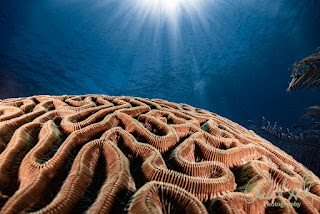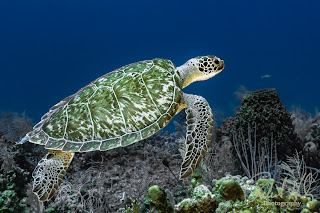Editing Your Underwater Shots: A Beginner Guide to Adobe Lightroom
Introduction
I thought this might be a good time to review the basics of using Adobe Lightroom to post-process your underwater photos. Many new tools and tricks have been recently added to Lightroom that I consider to be game changers and have greatly improved my own underwater photography, but without knowing how to use the basic controls first, the new AI functions will be of little use to you. Below are some of what I consider to be the basic steps and controls that everyone needs to master in Adobe Lightroom.
Underwater photography offers a unique and captivating
perspective of the world beneath the waves. However, the real magic often
happens during post-processing when you have the opportunity to enhance the
beauty of your underwater shots. Adobe Lightroom is a powerful tool that can
help you transform your raw underwater images into stunning masterpieces. In
this guide, I'll walk you through the step-by-step process of editing your
underwater photos using Adobe Lightroom.
The steps below are just the beginning of the process you need
to master before you get into the more advanced edit tools available in Adobe
Lightroom.
Step 1: Import Your Images
Before you can start editing your underwater photos, you
need to import them into Adobe Lightroom. As I have discussed previously, you
should always be shooting your photos in RAW and not JPG. Make sure you've
already transferred your raw images from your camera to your computer. To
import, follow these steps:
- Open
Lightroom and go to the Library module.
- Click
the "Import" button in the bottom left corner.
- Navigate
to your image folder and select the images you want to edit.
- Customize
your import settings, including file handling, file renaming, and
metadata.
- Click
the "Import" button to add your images to the Lightroom catalog.
Step 2: Organize Your Library
Organizing your library is essential, especially for
underwater photographers who capture numerous shots. In the Library module, you
can:
- Create
collections for specific dives or trips.
- Add
keywords to make your images searchable and help with organization.
- Use
flags, stars, and color labels to identify your best shots.
Step 3: Basic Adjustments
Now, let's dive into the editing process:
- Auto
Adjustment: Once in the Develop Module I always start with the “Auto”
button to ensure that the photos have the basic adjustments made so that I
can then make each of the adjustments below. Sometimes my photos are over
or under exposed and with the Auto button used I can see what adjustments
will need to be made going forward.
- White
Balance: Underwater images often have a blue or green color cast due
to the water's filtering effect. Adjust the white balance to bring back
the natural colors. Use the "White Balance" tool in the Develop
module to correct color temperature issues.
- Exposure
and Contrast: Fine-tune the exposure and contrast to balance the
brightness and contrast of your image. Use the "Exposure" and
"Contrast" sliders for these adjustments.
- Highlights
and Shadows: Underwater scenes may have both overexposed highlights
and underexposed shadows. Use the "Highlights" and
"Shadows" sliders to recover details in these areas.
Step 4: Correct Color and Clarity
Underwater photos often require enhancements to color and
clarity:
- Vibrance
and Saturation: Increase vibrance to make subtle colors pop without
oversaturating the image. Adjust saturation to bring out more intense
colors.
- Clarity:
Use the "Clarity" slider to improve image sharpness and enhance
fine details.
Step 5: Remove Unwanted Elements
Underwater images may contain distracting elements like
backscatter or debris. Use Lightroom's tools to clean up your shot:
- Spot
Removal Tool: This tool can clone or heal unwanted spots, such as
backscatter or debris.
- Crop
and Straighten: Crop your image to remove distractions and improve
composition. The straighten tool can help correct crooked horizons.
Step 6: Fine-Tune with Local Adjustments
For more precise adjustments, use local adjustments:
- Graduated
Filter: Apply adjustments gradually across your image. This tool is
useful for darkening or lighting specific areas, like the sky or the
ocean's surface.
- Radial
Filter: Create circular or elliptical masks to emphasize or
de-emphasize specific subjects or regions in your photo.
- Brush
Tool: Paint adjustments onto your image with the brush tool, allowing
you to target specific areas.
Step 7: Sharpen and Reduce Noise
Underwater photos can benefit from some sharpening and noise
reduction:
- Sharpening:
Use the sharpening panel to enhance fine details. Be careful not to
over-sharpen, as it can introduce noise.
- Noise
Reduction: Apply noise reduction to reduce graininess, which can be
common in underwater photography.
Step 8: Export Your Masterpiece
Once you're satisfied with your edits, it's time to export
your underwater masterpiece:
- In the
Library module, go to the Export panel.
- Choose
the file format (usually JPEG for sharing online).
- Select
the desired resolution and quality settings.
- Specify
the destination folder.
- Click
the "Export" button to save your edited image.
Conclusion
Editing your underwater shots in Adobe Lightroom is a
creative and rewarding process that allows you to bring out the best in your
underwater photography. With the right adjustments and a keen eye for detail,
you can transform your raw images into stunning underwater masterpieces that
capture the beauty and wonder of the ocean's depths. Practice and
experimentation will help you become proficient in the art of underwater photo
editing, and soon you'll be sharing your captivating underwater imagery with the
world.
Let me assist you in your underwater photographic journey with my upcoming online training course, which I will be announcing soon. If you are keen on acquiring more knowledge about it, kindly email me at bob@robertherb.com. You can also visit my website (Robert Herb Photography) to view some of my exemplary work.
I am eagerly anticipating your valuable feedback and suggestions.
Sincerely,
Bob Herb




Comments
Post a Comment
Please let me know your comments.